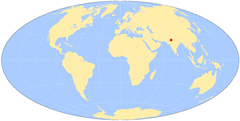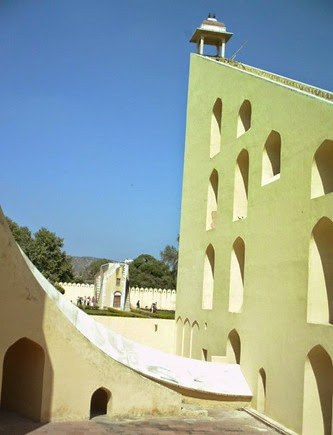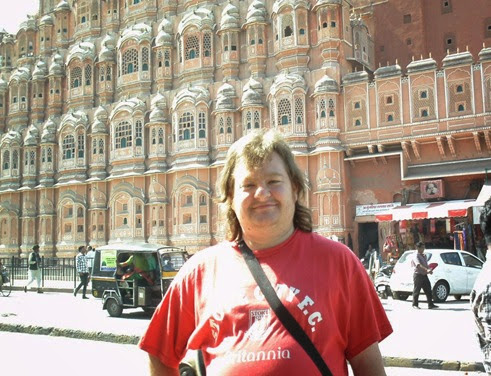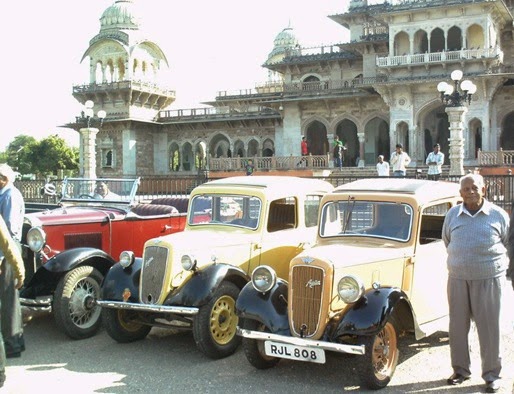
Greetings!
Sorry for the late posting this week, I was at a choir concert last nght. This week I explore Jaipur, supposedly one of India’s great ancient cities. Built in the 18th century, it was India’s first planned city and is act more a new town than anything else. I’ve been to a few planned cities in my time and I have to say that very few seemed to have worked as a concept. In the UK we have Telford and Milton Keynes from the 20th century which are both singularly awful, but we also have Port Sunlight, a model workers’ village constructed by the Lever family in the early years of the 20th century. The principles behind it are laudable: proper living space for workers, green areas and vernacular architecture, but even so there is still something slightly artificial about it all.
But what of Jaipur. Well, planned it may have been but it was the most beautiful city that I visited in India. Anyway, have a read for yourself to see what I thought in some more detail.
Uncle Travelling Matt
Flickr album of this journey
Links to other parts of the the travelogue:
Jaipur
Having explored the places outside of the city the day before, it was now time to see exactly what the famous Pink City has to offer, so after a South Indian dosa brunch, I wandered off towards the Old City.
I entered by the New Gate and entered the tidiest and most beautiful of India's old cities. This is all due to the fact that every building within the city walls has to be painted a particular shade of pink. One might think that this is to do with some ancient Hindu superstition or in commemoration of some long ago battle, but in fact the pink is actually all rather recent: it is the traditional colour of hospitality and the Maharajah ordered the town to be painted in it to welcome the Prince of Wales, (later King Edward VII), in 1853. So, the pink is quite modern, but to be fair, the entire “ancient” city of Jaipur is not much older than its prevailing colour; work only commenced on building Maharajah Jai Singh II's new capital – the first planned city in India – in 1727.
After entering the gate, I turned right along the Bapu Bazaar browsing in the fabric shops and buying an Angry Birds bedspread for Tom before turning up the Johan Bazaar where jewellery and metalwork were the order of the day until I reached Badi Chaupar, the centre of the Old City. There I took a slight detour to have my photo taken in front of the incredible Hawa Mahal (Palace of the Winds), the “extraordinary, fairy-tale, pink-sandstone, delicately honeycombed hive that rises a dizzying five storeys”,1 that is Jaipur's most famous landmark.
Returning to Badi Chaupur, I then headed along Tripolia Bazaar before veering off again to investigate Jantar Mantar, Jai Singh II's astronomical observatory. Now a World Heritage Site and looking like a weird Escher theme park, this was one of the most advanced observatories in the world when built, and is one of five built by the Maharajah. Wandering around the enormous instruments of star gazing, (Jai Singh II believed that bigger = more accurate), was fascinating except that, having run screaming from anything remotely approaching Mathematics after scraping through my GCSE aged sixteen, I hadn't a clue what any of them did, (beyond the sundial of course).
 Jantar Mantar: the speck on the hillside was the Hindu temple that I visited with a similar “watchtower”
Jantar Mantar: the speck on the hillside was the Hindu temple that I visited with a similar “watchtower”
Following Jantar Mantar I checked out the adjacent Chandra Mahal (City Palace) which was beautiful and impressive but my palace/fort fatigue was still strong so it, alas, left no lasting impression on me, although my next stop, the Hawa Mahal was more memorable, due to its unique layout and architecture and the fact that I fell into conversation with a young chap who was doing a survey for the National Tourist Board.2
Having seen the highlights of the Old City, I then headed down the Chaura Bazaar to the New Gate and into the newer districts, through the Ram Niwas Public Gardens to the British contribution to Jaipur's cultural landscape, the Albert Hall.
I liked the Albert Hall.3 I liked it because it was spectacular, because it had purpose and because the architecture was exquisite. But I also liked it because it was familiar. Not that it seemed so as I approached, an arrogant Anglo-Indian fantasia at the head of a broad boulevard – if there is a building in Britain that it resembles then it must be the Brighton Pavilion – but inside, yes, it was extremely familiar as, for all its turrets and crenelations, it was a very British building. It was a museum, an exposition of culture for the edification of the local populace. Yes, there was a touch of arrogance in such a paternalistic palace, but then much of the British Raj did smack of the arrogance of a race who believed God had chosen them to rule half the world, but arrogant though it may have been, the motives behind it were basically good. It was there to educate. I wandered through rooms of Chinese deities, Persian tiles, Egyptian mummies and Roman statuettes and realised that I could be in the Museum and Art Gallery of Birmingham, Manchester, Liverpool or a dozen other of Britain's great industrial cities. All date from the same period and all had the same agenda: to better and to enlighten the locals. The section entitled 'Industrial Arts' showcased the best of the local crafts just as Stoke-on-Trent's museum showcases pottery and Northampton's, shoes. But what I liked best was the series of murals depicting scenes from the literature of a dozen world cultures interspersed with those from India so that the good citizens of Jaipur could compare and contrast their own culture with the best of all the others.
After the Albert Hall I continued walking along J. Nehru Marg. into a scruffier area of town, away from the tourists and full of students as the university was situated there. Also to be found was the eccentric SRC Museum of Indology, a chaotic yet glorious private collection of artefacts from Indian history filling a private house. As far away from the modern ideal of the interactive, experiential museum as you can imagine, I loved it for its messiness and personal touch. It was the perfect end to my Jaipur tour and to celebrate that I took a tuk-tuk back to the hotel before dining out at the famous Moti Mahal Restaurant on incredible North Indian cuisine. And then, shattered by it all, I retired to my room to watch cricket and then hockey on the TV. Indeed, Indian TV I was rather loving; normally foreign TV is totally inaccessible without the language but here it was cricket, cricket, cricket, from university games to Test, (India were thrashing Australia which of course augured well for the upcoming Ashes series4), although that wasn't all: when I was in Agra I'd found the Japanese cartoon hero Doraemon5 to be shown on no less that four channels at the same time. Oh well, it beats X-Factor!
1As described in Lonely Planet India, p.111
2I told him that I liked India, would like to return, but the recent increase of visa fees from £40 to £80 was putting me off.
3Or 'Central Museum' to give it its current, official title.
4Which England won 3-0. We won't mention the return series after that though...
5Doraemon is as well-known across Asia as Mickey Mouse is in the West. I have a particular affection for him as his designer came from Toyama-ken, the same county that I worked in whilst living in Japan.
Technorati Tags: uncle travelling matt,matt pointon,incredible india,india,jaipur,pink city,hawa mahal,src museum of indology,albert hall,jantar mantar,doraemon,cricket,central museum,city palace




No comments:
Post a Comment